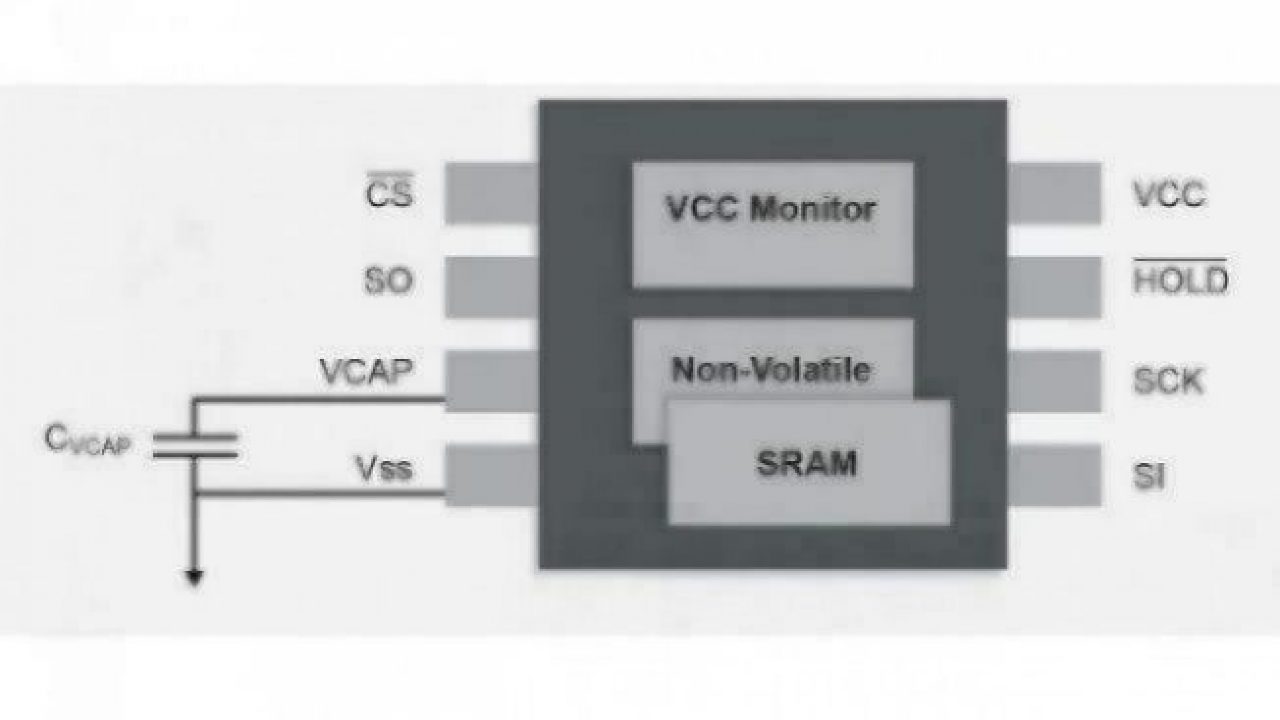SRAM Battery Backup Eliminated By EERAM
Article By : Gary Hilson

Small capacity memory could solve many problems more cost effectively and reliably than MRAM.
TORONTO – MRAM’s ambition to replace SRAM with battery backup may have competition with an older incumbent memory in the form of Microchip Technology’s latest EERAM product.
The company recently unveiled a new family of standalone, Serial Peripheral Interface (SPI) EERAM. It’s aimed at applications that involve repetitive task data logging and require the ability to automatically restore content if power is disrupted during processing. Examples where this capability would be useful include manufacturing equipment and smart meters.
SRAM with a battery to keep memory running in case of power loss has been the longstanding solution, but Microchip product marketing manager Grant Hulse said such a nonvolatile serial RAM (NVSRAM) solution tends to be the highest price-per-bit memory option, even though densities tend to be relatively low.
Microchip’s EERAM is essentially a serial SRAM that includes non-volatile transistors in every cell inside the device. Unlike NVSRAM, no external battery is needed, he said. It uses a small external capacitor to provide the energy needed to move the contents of the SRAM to the nonvolatile cells when system power is lost, which is accomplished by the IC monitoring voltage at the common collector and automatically handling the data movement between the SRAM and the nonvolatile memory when needed.
The additions to Microchip’s EERAM portfolio include four SPI densities ranging from 64 Kb to 1 Mb, Hulse said, and potentially offer system designers as much as 25% in cost savings compared to the incumbent serial NVSRAM. It’s not that there’s no longer any SRAM involved, but the traditional combination with a battery is being replaced by a chip. EERAM uses the same SPI and I2C protocols as serial SRAM, so the SRAM can retain content during power loss without needing that external battery.
“It’s really just an SRAM that runs all day, runs all night, and does its job over and over and over again,” he said. “And on that occasion when power goes away, we capture that information.”

Microchip’s EERAM contains non-volatile transistors in every cell and uses a small external capacitor to provide the energy needed to move the contents of the SRAM to the nonvolatile cells when system power is lost. (Source: Microchip)
The nonvolatile aspects of Microchip’s EERAM are invisible to the user, and the small capacity memory device can meet demand in several increasingly prevalent scenarios such as manufacturing lines, where a station might repeat simple tasks a million times, said Hulse. A power loss that compromises data may mean discarding items and delays that cost the manufacturer time and money. EERAM enables the line to resume as soon as power is restored because there’s no loss of data.
Smart power meters are another example, he said, because a short power loss to single home only means pennies to the owner, but to the utility it’s pennies multiple by thousands of homes. When the smart meter comes back online when the power does, they want to know how much the meter measured right before it went down.
Such small capacity memory doesn’t solve some of the more interesting problems such keeping up with the demands of artificial intelligence and machine learning, or supporting high-resolution video in a sleek smartphone, but there are a lot of problems that EERAM could potentially solve cost effectively and more reliably.
“For want of nail, a shoe was lost,” the saying goes; it’s applicable in many of these scenarios, said Jim Handy, principal analyst with Objective Analysis. In this case the nail is the battery that many companies want to eliminate because it’s unreliable. He noted EERAM is essentially the same technology as the old Simtek NoVRAM, a monolithic implementation of the NVDIMM; the only difference is that it uses an SPI or I2C interface. “It runs like an SRAM, until you yank the chain.”
Microchip’s EERAM solution for eliminating the unreliability of the battery backup problem is a market MRAM maker Everspin has been going after, only at the same price point of existing solutions, said Handy. What Microchip is saying is the MRAM solution is still too expensive than other options, and EERAM chip can be a little cheaper yet do the same job.
Subscribe to Newsletter
Test Qr code text s ss


